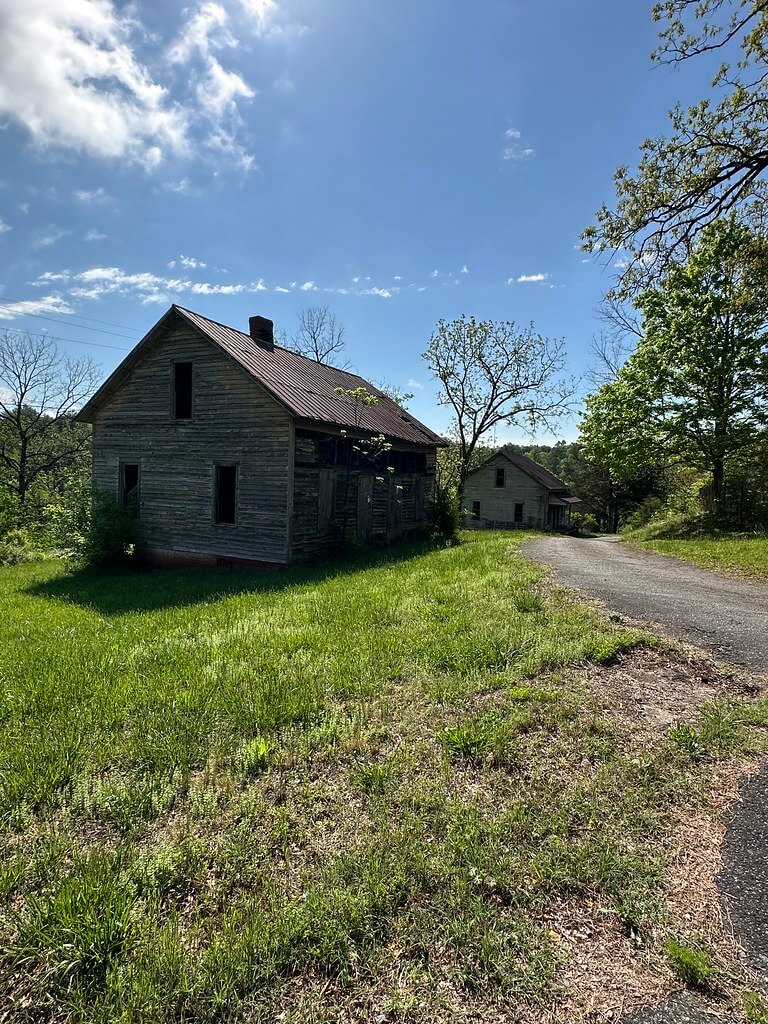Repurposed Appalachia Series

The Early Years
Tucked away in Burke County, North Carolina, the Henry River Mill Village tells a story of industrial ambition, close-knit community life, and cinematic fame. What began as a humble cotton mill evolved into a rare preserved example of Southern mill culture—and an unexpected Hollywood landmark.
Around 1901, members of the Aderholdt and Rudisill families partnered and began acquiring land in Burke County for the construction of a new cotton mill. Both families had previously invested in other mills, but the Henry River Manufacturing Company marked the beginning of a new venture for them.
Once they acquired the land, they organized the company in 1902 as a water-powered cotton mill. It would eventually become one of the last operational cotton mills to use water power, as the industry trend was shifting toward steam-powered mills.
Upon the establishment of the company, the deed was transferred that same year to the Henry River Manufacturing Company, which granted the right to build a dam across the Henry River. However, the company was required to compensate upstream landowners if any damage resulted from the construction of the new dam.
The mill began operations in 1903, according to records, but did not become fully operational until 1905. During this time, John Ballard, the superintendent of the Vivian Cotton Mill in Cherryville (a mill associated with the Aderholdt family), moved to Henry River to take charge of the new mill operations. Beyond this information, little else is known about John Ballard.
As time progressed, the company decided to transition from water to electric power. In 1925, they invested $90,000 in new equipment to facilitate the transition, and by the end of the following year, the mill was fully electric.
Financial Difficulty
Financial difficulties overtook the mill by the late 1920s. This led to a court-ordered sale of the company’s holdings in December 1928. The holdings included the mill, equipment, and approximately 700 acres of land. During a public auction, it was sold for $151,000.
Despite the sale, the original owners were able to regain control of the mill. In May 1929, a certificate of incorporation documented the name change from Henry River Manufacturing Company to Henry River Mills Company.

Employees of the Mill
In the 1930s, the mill employed approximately 125 people. Weekly production totaled 15,000 pounds of combed yarn, and the mill operated 10,300 spindles.
Many employees lived on the property, originally in 35 homes throughout the mill village. While rent was initially free, employees began paying rent in 1933.
Although the village functioned like a small town, it was never incorporated as a municipality, so mill officials handled all local matters. It was common for employees to take on multiple roles within the village.
Despite long shifts, this tight-knit community relied on one another. Many employees took on additional responsibilities unrelated to the mill. For example, Walter Young cut men’s hair, and Margaret Reep became known as the community beautician. Other jobs included working at the company store, fixing cars, or mowing lawns.
Unfortunately, the Henry River Mill Company officially closed in 1970. Former employees were allowed to remain on the property for $10 a month until it was purchased by Wade Shepherd. After acquiring the mill and land, Shepherd began charging $30 per month in rent.
Wade’s goal was to continue textile manufacturing, but this ended in 1977 when the mill was destroyed by fire. The eight families who had remained eventually moved away, and the houses and land fell into disrepair.
From Mill to Fame
Though the buildings once echoed with the hum of spindles, today they stand as echoes of a different kind—those of cinema and storytelling. In 2011, the village found fame when it was chosen as the filming location for District 12 in the movie The Hunger Games. This was the district where Katniss Everdeen, the main character, lived. The “Katniss Everdeen cottage,” house #16, is still maintained and accessible during village tours.
The Henry River Mill Today
Ownership changed hands again in 2017, when the property was purchased by Calvin Reyes and his family, the most recent known owners.
Today, the village has become a popular destination, attracting visitors from around the world. Although many come to see the famous District 12 filming location, they often leave with a newfound appreciation for the village’s history. Tour tickets allow visitors to explore the area independently, including twenty still-standing houses, the dam, and more. Guided tours are also available throughout the day.
For those wishing to immerse themselves in the experience, a mill house originally built in 1905 has been converted into lodging. It is divided into two rentable units, allowing guests to stay overnight and explore the village after hours.
Sources and Further Reading
North Carolina State Historic Preservation Office. National Register of Historic Places Nomination Form: Henry River Mill Village. August 2018. https://files.nc.gov/ncdcr/nr/BK0086.pdf.
Brown, Tami Fox. “Village Voices.” Our State, May 2018. https://www.ourstate.com/village-voices/.
Henry River Mill Village. “History of the Village.” Accessed May 8, 2025. https://henryrivermillvillage.com/history/.
Romantic Asheville. “Henry River Mill Village: Hunger Games District 12.” Accessed May 8, 2025. https://www.romanticasheville.com/henry-river.
Callihan & Keller, Henry River Mill Village (Arcadia, 2012). Many social-history details in the NRHP nomination (e.g., “doogaloo” tokens; community roles) are attributed to this book—great to list explicitly since you touch on village life. (NRHP cites it repeatedly.) North Carolina Files
Our State (2021, “Village Voices”) for modern visitation/tour context and quotes from co-owner Calvin Reyes. Our State
Author Note: [Blank]